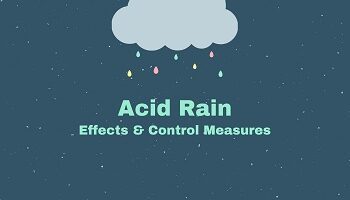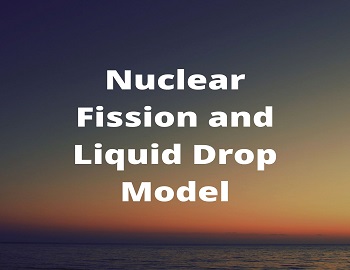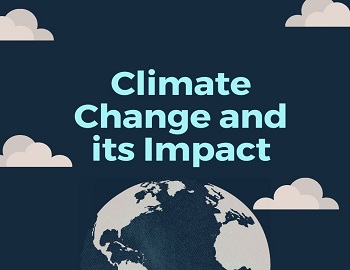Table of Contents
What is Ozone Layer?
In the atmosphere, Ozone is largely found in the stratosphere. Ozone absorbs most of the UV radiations of the sun and thus acts as a shield, protecting the living organisms on Earth from health hazards. That’s why the ozone layer is also called the Ozone Shield.
| Key Point: September 16 is World Ozone Day. |
How Ozone Layer is Formed?
Ozone is a form of oxygen. The molecule of oxygen contains two atoms whereas that of ozone contains three (O3). In the stratosphere, ozone is continuously being created by the absorption of short-wavelength ultraviolet (UV) radiations. Ultraviolet radiations less than 242 nanometers decompose molecular oxygen into atomic oxygen (O) by photolytic decomposition.
| O2 + hν ————–> O + O |
The atomic oxygen rapidly reacts with molecular oxygen to form ozone.
| O + O2 + M ————–> O3 + M |
Where ‘M’ is a third body necessary to carry away the energy released in the reaction.
Ozone thus formed distributes itself in the stratosphere and absorb harmful ultraviolet radiations (200 to 320 nm) and is continuously being converted back to molecular oxygen.
| O3 + hν ————-> O2 + O |
Absorption of UV radiations results in heating of the stratosphere.
Measurement of Ozone:
The amount of atmospheric ozone is measured by the ‘Dobson Spectrometer‘ and is expressed in Dobson Units (DU). One DU is equivalent to a 0.01 mm thickness of pure ozone at the density it would possess if it were brought to ground level (1 atm) pressure.
What is Ozone Depleting Substances?
Ozone depleting substances are those chemicals that react with ozone and change the same into oxygen. The important ones are chlorofluorocarbons (chlorofluoromethane, freon), halons, nitrogen oxides, chlorine, methyl chloroform and carbon tetrachloride.
Causes of Ozone Depletion:
Both chlorine and bromine-containing substances catalyse ozone destruction. The primary chemicals responsible for ozone loss in the stratosphere are a group of versatile chlorine-containing compounds called chlorofluorocarbons (CFCs).
Chlorofluorocarbons have been used as propellants for aerosol cans, as coolants in air conditioners and refrigerators (for example- Freon), as foam-blowing agents for insulation and packaging (for example- Styrofoam) and as solvents.
Additional compounds that also attack ozone include halons, methyl bromide, methyl chloroform, carbon tetrachloride and nitrous oxide. Halons, which contain both bromine and chlorine, are used as fire retardants.
Aerosols introduced into the stratosphere by volcanic activity also can act to reduce ozone concentration.
| Key Point- The June 1991 eruption of Mount Pinatubo, in the Phillippines, reduced global ozone in the stratosphere by 4% during the following year, with a reduction over midlatitudes of up to 9%. |
How Ozone Layer is depleted?
Chlorofluorocarbons or Freons get accumulated in greater amounts at high altitudes and gradually reach the stratosphere. Under the influence of intense short wave ultraviolet radiations, they release chlorine atoms. A single chlorine atom can react with more than, 100,000 molecules of ozone and can convert them into oxygen. Other ozone-depleting substances like methane, nitrous oxide, methyl bromide etc. too, pass through a series of reactions under the influence of UV radiations of sunlight and catalysts found in the air and help in the depletion of the Ozone Layer.
What is Ozone Hole?
The ozone hole was first detected in the stratosphere over the Antarctic by Dr Joe C. Farman and his colleagues in the British Antarctic Survey who had been recording ozone levels over this region since 1957.
The part of the atmosphere where ozone is most depleted is referred to as an “Ozone hole” but it is not a real hole just a vast region of the upper atmosphere where there is less ozone than elsewhere.
Effects of Ozone Depletion:
- Ozone depletion in the stratosphere will result in more UV radiation reaching the earth especially UV-B (290-320 nm). Ultraviolet-B radiation can cause mutations or changes in the deoxyribonucleic acid (DNA) residing in skin cells. Over time, such changes gradually accumulate and may lead to skin cancer (basal and squamous cell carcinoma).
- Exposure of the eye to ultraviolet radiation damages the cornea and lens of the eye and may cause cataract or even blindness.
- Melanin producing cells of the epidermis (important for the human immune system) will be destroyed by UV-rays resulting in immuno-suppression. Fair people (who cannot produce enough melanin) will be at a greater risk of UV exposure.
- In plants, photosynthetic chemicals will be affected and therefore photosynthesis will be inhibited. Decreased photosynthesis will result in increased atmospheric CO2 resulting in global warming and also a shortage of food leading to the food crisis.
- Due to ozone reduction, intense UV radiation causes greater evaporation of surface water through the stomata of the leaves and decreases the soil moisture content.
- Phytoplanktons are sensitive to UV exposure. Ozone depletion will result in a decrease in their population thereby affecting the population of zooplankton, fish, marine animals, in fact, the whole aquatic food chain.
- Ozone depletion has a very strong effect on climate. The ozone layer absorbs the ultraviolet radiation and heats up the stratosphere, setting up a temperature gradient from -56°C to -2°C as the altitude increases from 11 to 50 km. Depletion of the ozone layer will upset the heat balance of the earth.
- Acid rain instances are also likely to increase as ozone depletion will lead to increase in amounts of hydrogen peroxide in troposphere
- Degradation of paints, plastics and other polymer material will result in economic loss due to the effects of UV radiation resulting from ozone depletion.
Steps taken by global community to combat Ozone depletion are:
- Vienna Convention for the protection and maintenance of ozone layer, 1985.
- Adoption of the Montreal Protocol in 1987 as a consequence of the Vienna Convention banning the use of chlorofluorocarbon (CFC) compounds, as well as other ozone-depleting chemicals such as carbon tetrachloride, trichloroethane (also known as methyl chloroform), and bromine compounds known as halons.
- IPCC (Intergovernmental Panel on Climate Change) was formed in 1988 under UNEP (United Nations Environment Programme) and WMO (World Meteorological Organization) which now works in close coordination with UNFCCC (United Nations Framework Convention on Climate Change).









Comments (No)